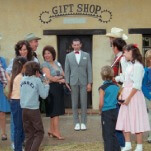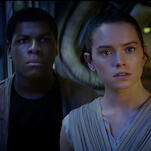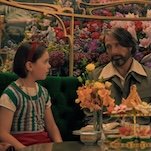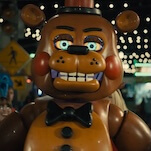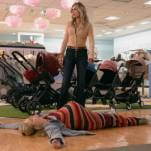The Stephen King cinematic renaissance could really use Frank Darabont
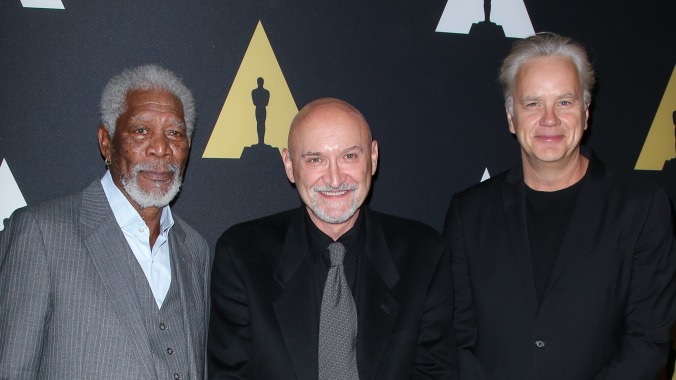
It’s been 12 years since Frank Darabont directed a movie, but the epilogue he left viewers with still stings. The Mist, his 2007 adaptation of Stephen King’s Lovecraftian novella of the same name, ends with hero David Drayton (Thomas Jane) euthanizing his fellow survivors (including his 8-year-old son) in the face of what appears to be certain death. As he prepares to sacrifice himself to the creatures of the mist, it suddenly dissolves—the calvary arrives, the day is saved. He killed his son for nothing. He screams. The movie ends. It’s a gutting, gasp-worthy swerve that’s even more shocking when you remember it comes from the guy behind The Shawshank Redemption (that soul-warming ode to hope, “maybe the best of things,” which turns 25 today).
“I knew that it was going to be a love-it-or-hate-it ending. But I thought, sometimes you’ve really got to go for it,” Darabont told The A.V. Club. Besides, he said, “It felt true to Steve’s work.” King agreed, telling him that he wished he had thought of that ending himself. “And then that, of course, turned into a challenge to find somebody willing to fund the movie because, of course, everyone wanted to change the ending,” he said. (King stuck by his endorsement, later calling the ending “such a jolt—wham!”)
Darabont’s doggedness is the stuff of legend, from his well-publicized budget struggles with AMC over The Walking Dead, which he developed, to his decision to turn down “a shitload of dough” so he, a relatively green 33-year-old, could direct Shawshank himself. Darabont often uses the word “muscular” to describe art he admires, but it’s also a pretty great descriptor of his work. To engage with his career is to feel not just the gravitas of his vision, but also the forceful yet precise touch he brings to adaptations. Like a strongman bending a lead pipe into something knotty and ridged, he retooled King’s simple novella Rita Hayworth And Shawshank Redemption into a complex work of powerhouse cinema. Although the friendship between convicts Andy (Tim Robbins) and Red (Morgan Freeman) hews close to the novella’s depiction, Darabont’s pen gave us identifiable villains in Warden Norton (Bob Gunton) and Captain Hadley (Clancy Brown), as well as endearing, cautionary figures in the good-hearted Brooks (James Whitmore) and the doomed Tommy (Gil Bellows). It’s one of the few films that even the King faithful would agree improves upon its source material.
It’s also the kind of bold, thoughtful, and deeply reverent adaptation that could only come from a lifelong fan of King’s work. Darabont got into the author, it turns out, the same way so many children of the ’70s and ’80s did: via a mail-order book club.
“If you didn’t want to buy the selection, you had to send the card back and let them know not to ship it, and I was a flaky teenager in high school and forgot to send the card back,” he explained. “Then they shipped me, purely by mistake, The Shining.” He meant to mail it back, but couldn’t stop himself from flipping through it first. “My eyes landed on the paragraph where the dead woman sits up in the bathtub and scares the hell out of Danny Torrance. That froze me in my tracks,” he said. “I sat down and I read the book in a white heat. I got to the end and did something I’d very rarely do, which is go back to the first page and read it again.”
Darabont went on to build his career in horror, writing scripts for A Nightmare On Elm Street 3: Dream Warriors (1987), The Blob remake (1988), and The Fly II (1989). It would seem only natural that he would tap into one of King’s spookier stories for his directorial debut. But he went a different route, making a short in 1984 from “The Woman In The Room,” a heartrending tale of grief and terminal illness collected in 1978’s Night Shift. “It’s not supernatural horror, but it’s a horror tale for sure,” he says. “I love genre stuff… That’s in my DNA. But the more genre can wrap its arms around stories of the human condition, the more I love it. That’s why I love [Twilight Zone creator] Rod Serling, for example, or Stephen King—they’re such humanistic storytellers.”
If there’s anything the history of King’s cinematic adaptations can teach us, it’s that the humanism Darabont reveres is key to making a good King movie. Unfortunately, that’s a lesson that seems to resonate with only a handful of filmmakers—Darabont, Gerald’s Game’s Mike Flanagan, and Stand By Me’s Rob Reiner—and not studios. Because for every Mist or Misery, there’s a half-dozen adaptations that speed in the opposite direction, be it through throwing out King’s original story (The Children Of The Corn, The Lawnmower Man), misinterpreting what makes a story special (The Dark Tower, It Chapter 2), or folding in an incompatible vision (Under The Dome, 2019’s Pet Sematary). Although this latest King cinematic renaissance has seen a number of strong outings—It Chapter 1, Gerald’s Game, Zak Hilditch’s 1922, Hulu’s 11/22/63—the high profitability of creative misfires like Pet Sematary and It Chapter 2 are bound to teach the studios behind the massive slate of upcoming adaptations the wrong lessons.












